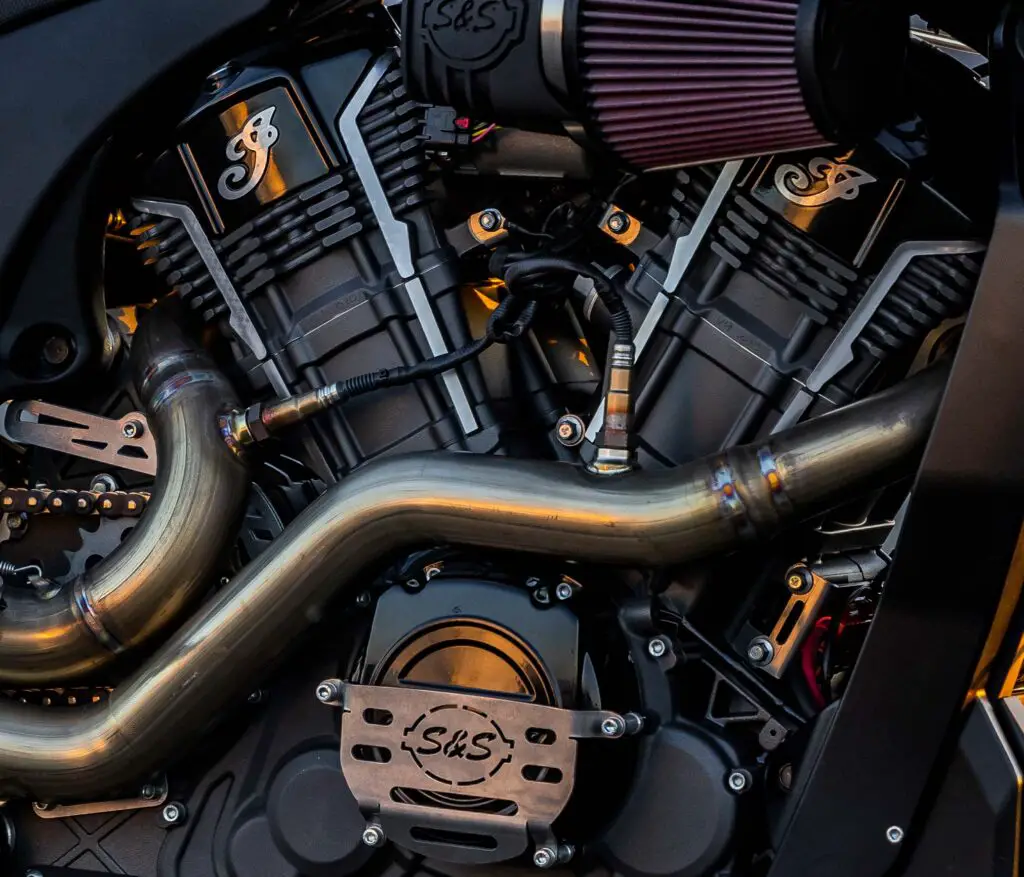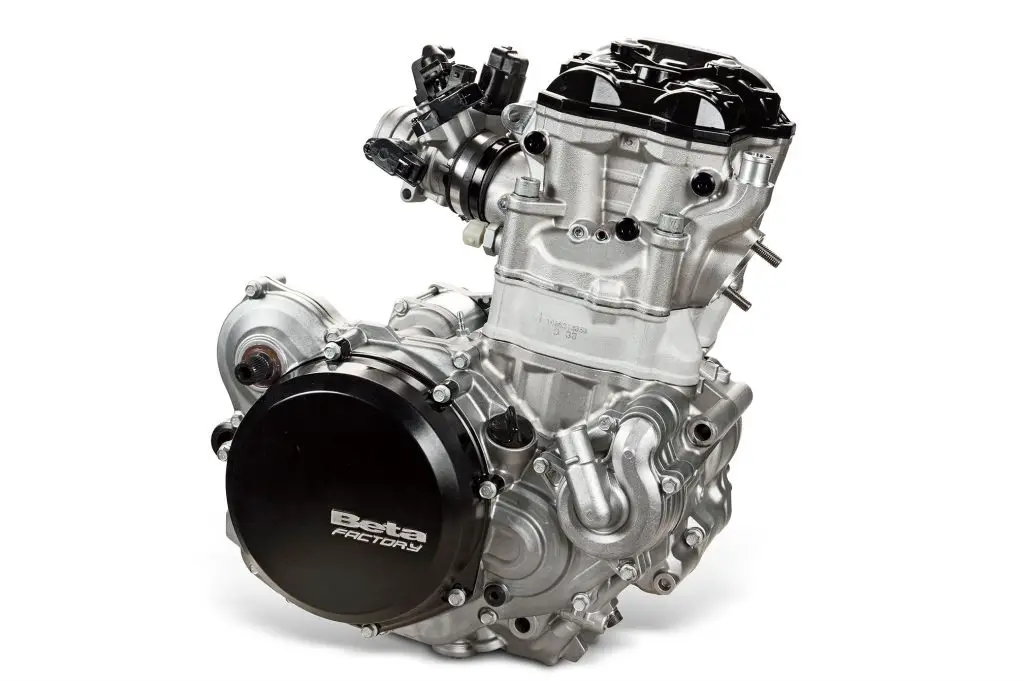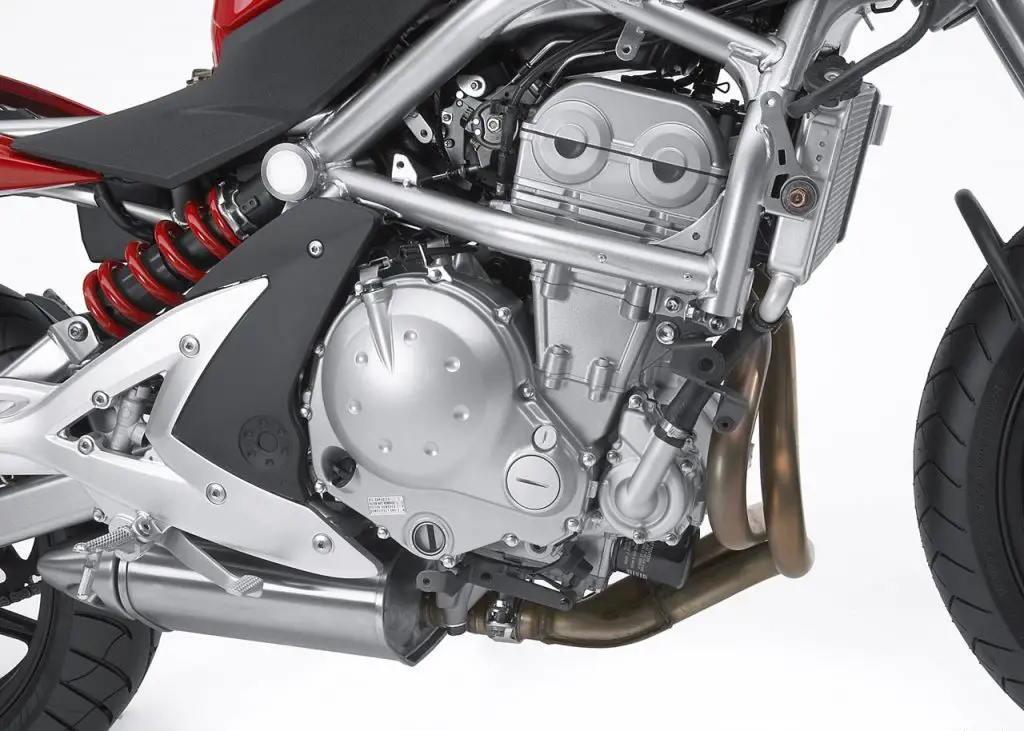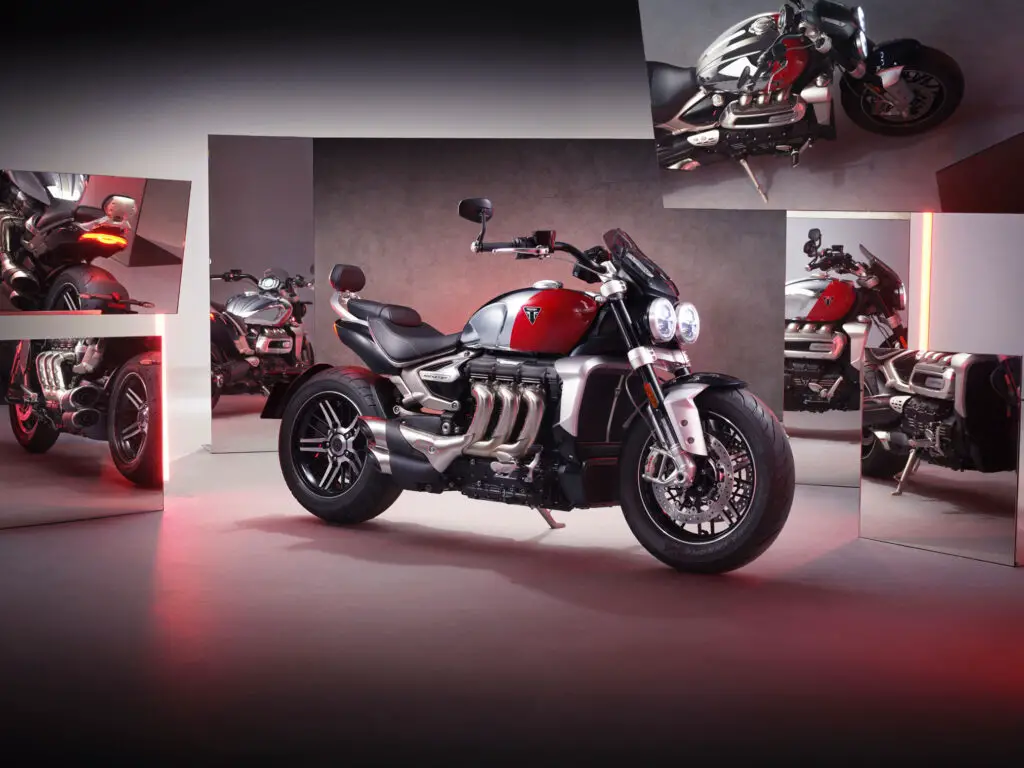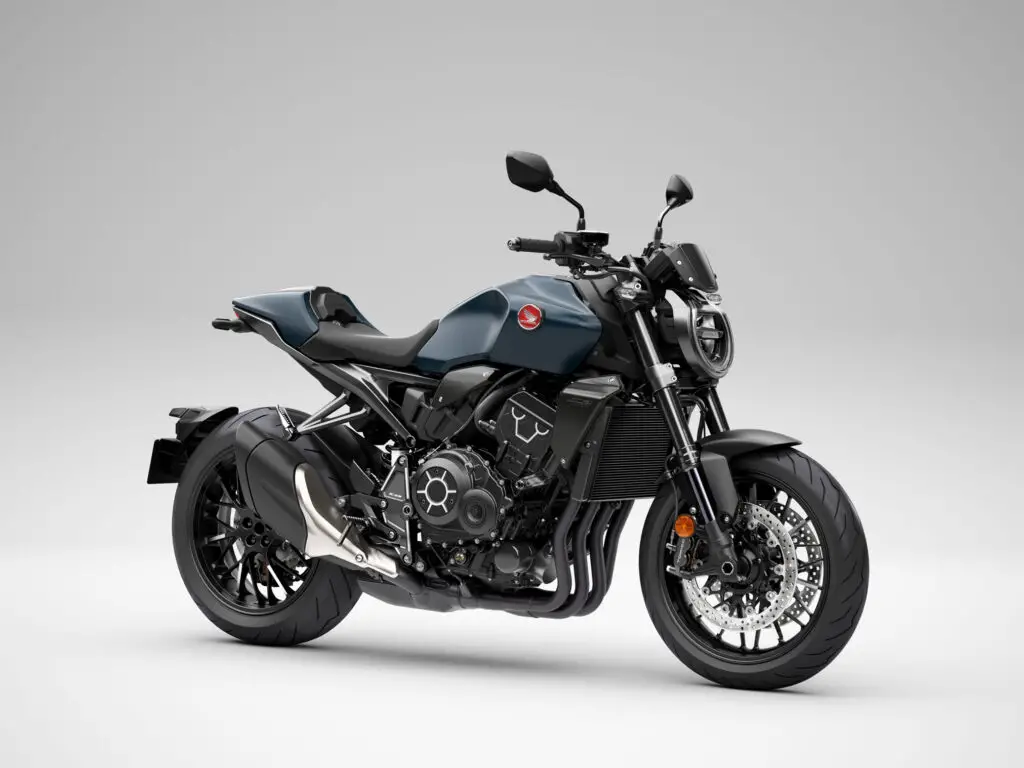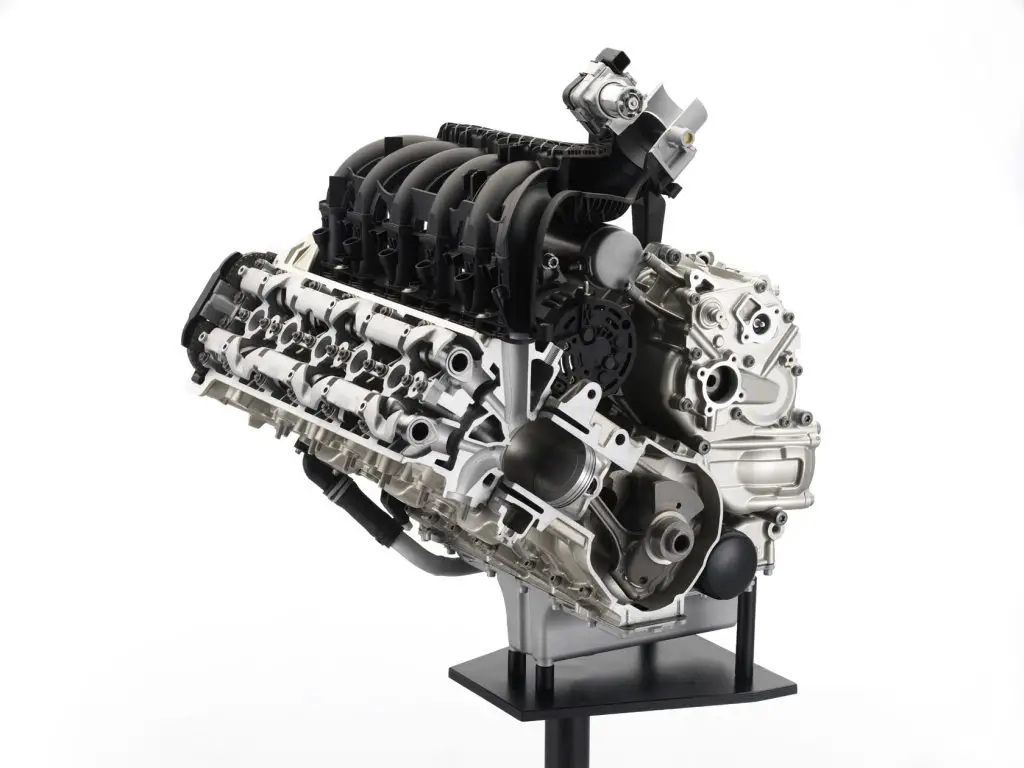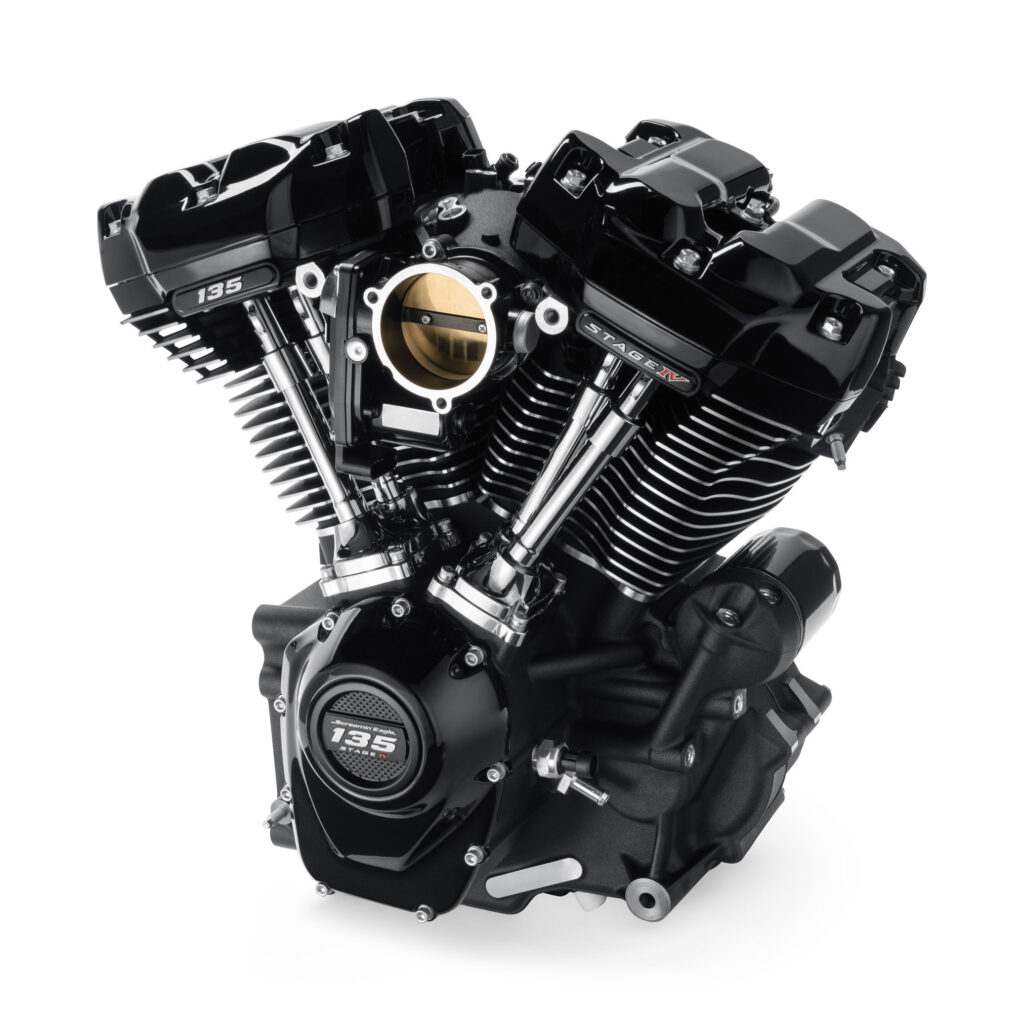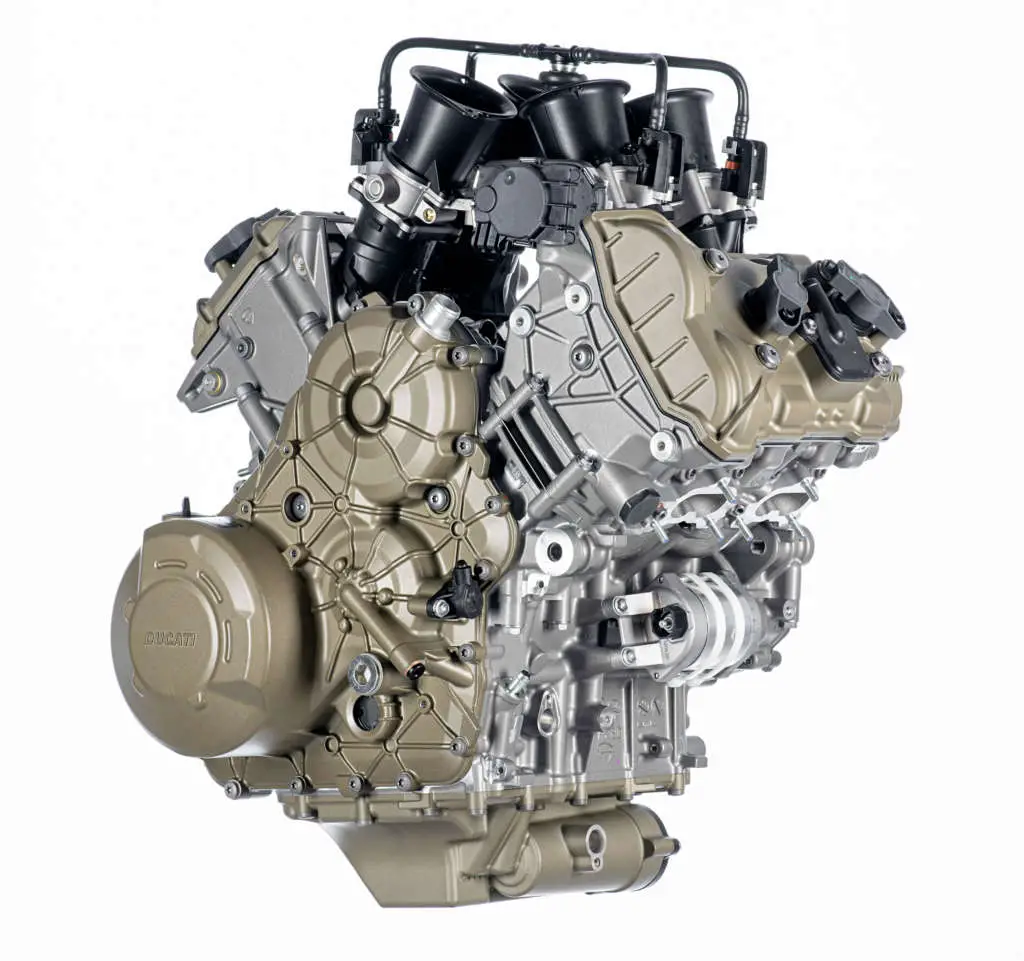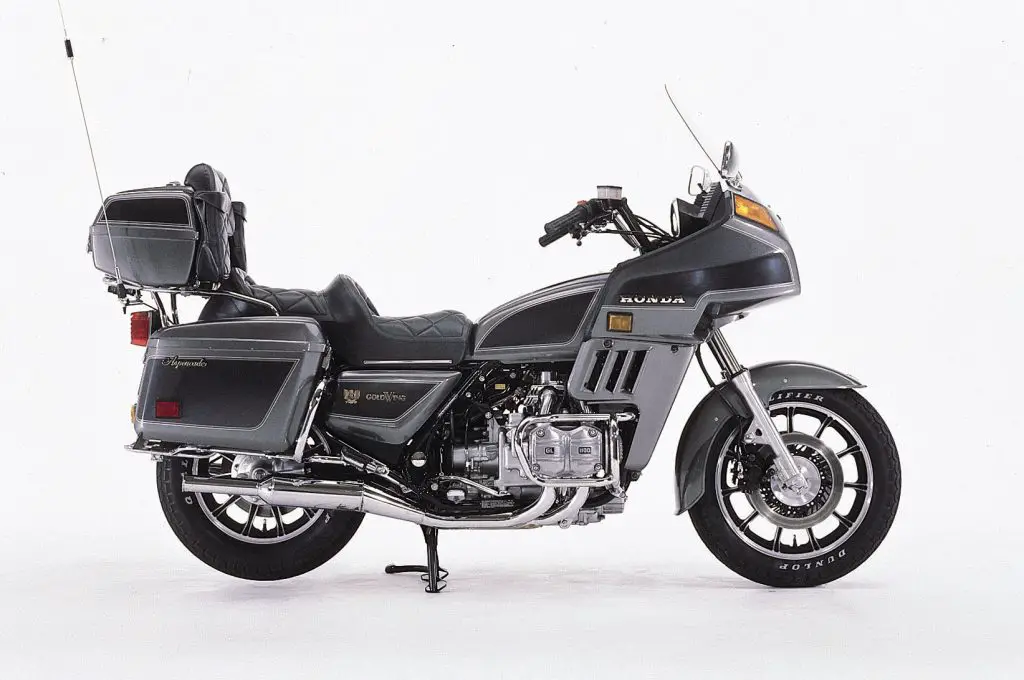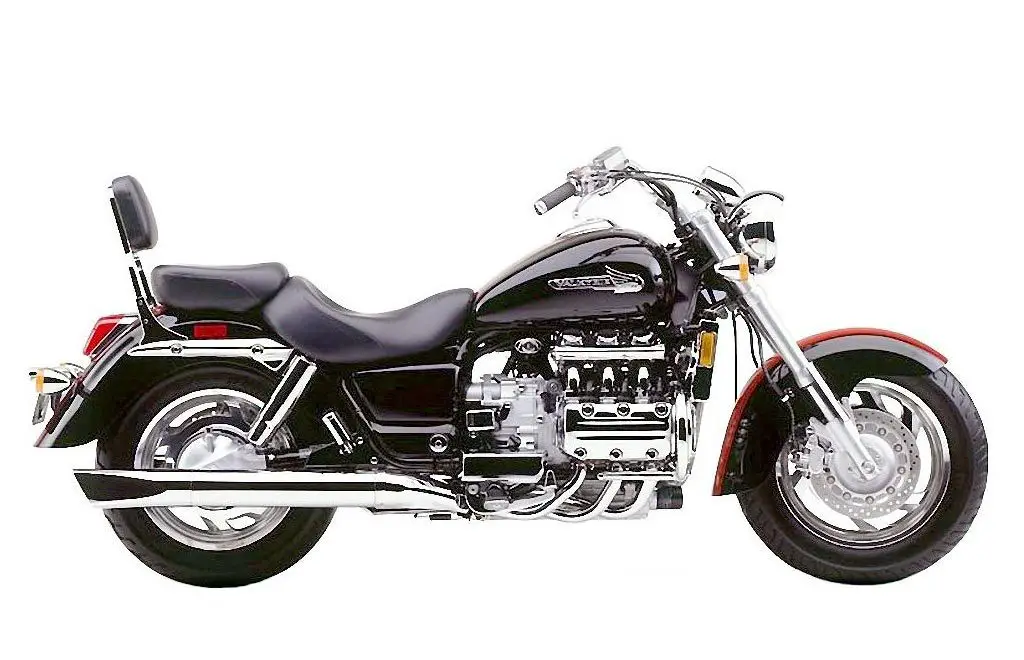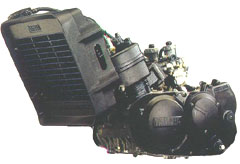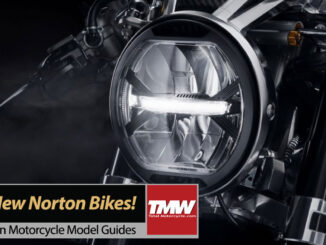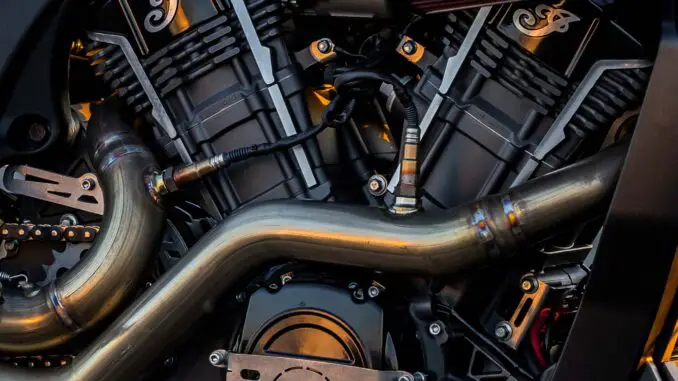
Section Six: The Soul of a Bike – The Engine
Where to go, where to start to optimize your riding skills and not miss anything. Well, here is how I started, maybe it might be the way for you too.
To listen to the Engine Sounds, you may to have to: Right Click, and choose “Save Target” to save the sound file to your hard drive, then play it from there (by double clicking on it).
This section will help you out, just relax and read on…
The Soul of a Motorcycle – The Engine
– Four-Stroke Motorcycle Engines
– The Single Cylinder Motorcycle Engine
– The In-Line Motorcycle Engine
– In-Line Parallel Twin Motorcycle Engines
– In-Line Triple Cylinder Motorcycle Engines
– In-Line Four Cylinder Motorcycle Engines
– In-Line Six Cylinder Motorcycle Engines– The V-Twin Cylinder Motorcycle Engine
– V2 (Twin) Motorcycle Engines
– V4 (Four) Motorcycle Engines– Boxer Two Cylinder Motorcycle Engines
– Boxer Four Cylinder Motorcycle Engine
– Boxer Six Cylinder Motorcycle Engine– Two-Stroke Motorcycle Engines
– Two-Stroke Single Cylinder Motorcycle Engines
– Two-Stroke Parallel Twin Motorcycle Engines
Motorcycle Engines
“You have a choice. You can either have the “growl, grunt and thump” or you can have maximum performance – but you cannot have them both. Fewer cylinders sound great and are associated with biker attitude and popular cruiser culture. Fewer cylinders however limit the motorcycle’s maximum rpm. This impacts performance, acceleration, horsepower and torque at the top end of the rev counter. At lower revs however there is little to choose between 2, 3 and 4 cylinders – in fact 2 cylinders delivers more torque at low revs.
The fewer the cylinders in the engine, the more the bike is suited to trails, off-road and MX conditions because of the need for more torque at low revs.
The more cylinders there are, the more the bike is suited to long distances on tar road due to the increased smoothness of the engine.
Vibrations generally decrease with an increase in the number of cylinders. Important for long distance touring.”
Four-Stroke Motorcycle Engines:
In a Four-Stroke engine the intake valve opens and the piston goes down, sucking the fuel mixture into the cylinder. The intake valve then closes as the piston comes back up squeezing the mixture. Spark now occurs and the burning gases expand, pushing the piston down with lots of power. As the piston comes up again, the exhaust valve opens and the burnt gases are blown out of the engine and the process starts over again.
This is all done in four strokes of the piston.
Piston down… Piston up… Piston down… Piston up.
Four-Strokes.
Single Cylinder Motorcycle Engines:
The most basic of motorcycle engine designs with 1 piston, 1 cylinder to move it up and down in and 1 spark plug. Easy to fix, light, easy to maintain and cheap.
Description: Primarily used in smaller motorcycles where torque is more important that horsepower and top speed such as in Dual-Sports, Dirt Bikes, Motocross. Other types of bikes also use them when cost, weight and simplicity are important (Suzuki Savage 650, MZ Sport). Because they use a single carburetor, there is never a need to do a “carburetor synchronizing” job and thus saves money each year. You will also hear them called a “thumper” due to the sound it makes when running. Offering more torque and any other type of engine style including the Vee-Twin (V-Twin).
The disadvantages of a Single Cylinder Engine are: Its inability to have a high RPM (revolutions per minute) and cannot produce much horsepower or top speed. Since there is only one cylinder it is extremely difficult to make the engine feel smooth while running and because of this the Single has a high vibration.
The In-Line Motorcycle Engine:
Configuration where all cylinders are in a single row. A Parallel-Twin is an engine having two cylinders placed parallel to each other and vertical. A Triple is a 3-cylinder motorcycle engine. Engine layout in which the cylinders are arranged in a row, and in-line with the wheels of the machine.
In-Line Parallel Twin Motorcycle Engines:
|
1973 Yamaha TX500B
|
Parallel Twin
|
start, idle, revving
Our Rating: 5/10 |
0:21
|
213kb
|
|
|
1989 Kawasaki Ninja 250
|
Parallel Twin
|
Idle, fast rev, max rpm revving. Our Rating: 6/10
|
1:26
|
1.1mb
|
Description: In-Line Parallel Twin motorcycle engines are two cylinder designs running parallel to each other in separate chambers either in 180o (one up, one down) or 360o (both up, both down) configurations. Today, the Parallel Twin engine isn’t as popular as it once was, but it produces torque like a single, is light in weight and produce almost double the RPM and have good horsepower and top speed as well. Bikes that use them today (GS500E, CB400/500, Ninja 250/500) choose this design for its inherent advantages to a light, fast and nimble style bike. Since they have almost twice as many components as a single and use a double barrel carburetor maintenance is higher but not as high as other In-line engines. Thanks to having two pistons and with the use of counter balancers to counter the effect of piston forces parallel twin engines are much more smooth than Singles.
The disadvantages of the In-line Parallel twin is more vibration, lower RPM and lower horsepower than other In-line engines.
In-Line Triple Cylinder Motorcycle Engines:
|
1999 Triumph Sprint ST
|
In-line 3 cylinder
|
idle, revving, hard accelerate, passing at speed.
Our Rating: 7/10 |
0:55
|
900kb
|
|
|
1999 Triumph Sprint ST
|
In-line 3 cylinder
|
deep idling
Our Rating: 5/10 |
0:27
|
686kb
|
|
|
2002 Triumph Sprint RS
|
955cc In-Line 3 cylinder
|
Idle and accelerate.
Our Rating: 5/10 |
0:09
|
474kb
|
|
|
1974 Suzuki GT750 “Kettle”
|
In-Line 3 cylinder
|
On board very hard accelerate through all gears
Our Rating: 9/10 |
0:22
|
233kb
|
|
|
2002 Triumph Daytona
|
In-line 3 cylinder
|
accelerate away.
Our Rating: 6/10 |
0:08
|
35kb
|
|
|
2002 Triumph Daytona
|
In-line 3 cylinder
|
The full buffet: Start, Idle, rev, passing, and get on board for top speed all gears.
Our Rating: 9/10 |
3:17
|
2.3mb
|
Description: In-Line Triple Cylinder engines are getting harder to find in today’s motorcycles. An older design to minimize the disadvantages of both the Parallel Twin and the In-Line Four in one package. Trident Motorcycle Corporation is almost the last manufacturer still using this style of engine in their new motorcycles (Speed Triple). The advantages of Inline Triples are: They are able to produce much higher RPM and take advantage of still having more torque than the In-Line four design. Weigh less than the In-Line four and use less moving parts as well. As well as suffering less vibration because the pistons can be more easily balanced. Savings on maintenance is marginal verses the In-Line four, while parts are more expensive due to the “rarity” of the engine style. While they may not be as smooth or offer as much torque as inline twin/four design, they are a good compromise for what they do well.
In-Line Four Cylinder Motorcycle Engines:
|
2000 kawasaki ZRX1200
|
In-Line 4 cylinder
|
idle, fast revving.
Our Rating: 8/10 |
0:17
|
136kb
|
|
|
2002 Suzuki GSXR600
|
599cc In-Line 4 cylinder
|
revving, accelerate and pass.
Our Rating: 7/10 |
0:28
|
194kb
|
|
|
1999 Suzuki 1200 Bandit
|
In-Line 4 cyl
|
On board very hard accelerate through all gears. Max RPM
Our Rating: 9/10 |
0:29
|
347kb
|
Description: Today’s speed king engine for top horsepower, smoothness and top speed. Many bikes offer this engine because of those features like the ZX1200R, CB900F, GSXR750. The In-Line Four was introduced in 1968 on the Honda CB750 and no other engine could match it at the time on the drag strip. Mostly found in the larger (500cc) sized capacities due to there complexity and size of pistons required.
The disadvantages of this style are weight, complexity, lack of torque at lower RPM ranges. Since most in-line four engines use a bank of four carburetors maintenance costs are near the highest for the in-line engines. Smoothness while very good is not as good as the boxer style of engines.
In-Line Six Cylinder Motorcycle Engines:
|
1979 Honda CBX
|
In-line Six Cylinder
|
fast rev, on board, hard accelerate through all 5 gears…
Our Rating: 10/10 |
Listen
|
664kb
|
Description: A highly complex engine produced mainly in the late 70’s and early 80’s. The In-line Six was designed both in a horsepower, size and multi-cylinder war to be the king of all engines. Found only in the largest (1000cc+) motorcycles (such as the Z1300, CBX1000) and offering more top end speed, horsepower and smoothness than the in-line fours.
The disadvantages unfortunately mostly outweighed the advantages: Too many moving parts, too complex for its time, too expensive to maintain, too heavy. While carburetors were two carbs in a bank and a set of 3 (instead of 6 individual carburetors) they were still very hard to maintain properly. Unfortunately, the market was never ready for such a complex engine at the time.
The V-Twin Cylinder Motorcycle Engine:
Two-cylinder engine layout in which the cylinders form a “V” at an angle to the transmission case.
V2 (Twin), V-Twin Motorcycle Engines:
|
1997 Ducati 900SP
|
904cc 90° V-twin
|
idle, accelerate away
Our Rating: 7/10 |
0:12
|
135kb
|
|
|
1985 Yamaha VMax
|
V-Four cylinder
|
idle, revving.
Our Rating: 4/10 |
0:08
|
193kb
|
|
|
2000 honda shadow ace 750
|
52° v-twin
|
idle, revving, accelerate away
Our Rating: 10/10 |
0:27
|
189kb
|
|
|
2000 honda shadow ace 750 2
|
52° v-twin
|
comes to a stop, idles, revving, accelerate away
Our Rating: 10/10 |
0:08
|
138kb
|
|
|
1999 748 Ducati Biposto 2
|
748cc 90° L-twin
|
Idle and rev.
Our Rating: 7/10 |
0:21
|
248kb
|
|
|
1999 748 Ducati Biposto 2
|
748cc 90° L-twin
|
Idle and rev.
Our Rating: 8/10 |
0:33
|
393kb
|
|
|
2002 Suzuki SV650
|
645cc 90° V-Twin
|
Idle, lots of revving.
Our Rating: 4/10 |
0:14
|
645kb
|
|
|
1999 748 Ducati Biposto
|
748cc 90° L-twin
|
Idle and lots of revving
Our Rating: 8/10 |
1:49
|
639kb
|
|
|
1997 Ducati 916
|
916cc 90° V-Twin
|
Idle and accelerate.
Our Rating: 6/10 |
0:10
|
474kb
|
Description: Description: A well developed very early 1900’s engine design to allow two cylinders to occupy the narrow bicycle shaped frame of the time and to control width. The idea was a good one, and was well accepted as the years progressed. You can find the V-Twin (V-Twin) motorcycle engines in a variety of motorcycles today with most of them being in the cruiser style. V Twin engines are designed in different amounts of degrees (measured from the middle of each piston to piston), the further apart the angle is, the smoother than engine becomes without loosing and advantages over the narrower V Twin designs. Naturally, as the angle increases the V-Twin gets longer (and larger) in size (but not in width).
The V-Twin engine has many advantages such as: Low weight, simplicity, high torque, and able to provide a good RPM range. The V-Twin also has a few disadvantages as well such as: Low horsepower and top speed compared to 3+ multi-cylinder engines, and depending on the V angle can have a high vibration. 90 degree Vs are inherently well balanced meaning they vibrate far less than other v angles or parallel Twins.
While the V-Twin is most popular in Cruiser type motorcycles, the engine characteristics does not ideally match the bike’s design (other than the sound a V-Twin makes) since there are more suited designs on the market (In-Line (3/4), Boxer, V-Four).
V4 (Four) Cylinder Motorcycle Engines:
|
1985 Yamaha VMax
|
V-Four cylinder
|
idle, revving.
Our Rating: 4/10 |
0:08
|
193kb
|
Description: An advancement on the V-Twin design to remove the inherent disadvantages such as vibration, top speed and horsepower. Today, you can find the V-Four engine in power cruisers, muscle bikes and touring bikes (like the Vmax, Magna, Venture) where large capacity (750cc+). The V-Four is a newly developed (early 1980’s) engine and offered advantages of its own such as smoother ride, more torque and horsepower, and less complexity and width than the In-Line 4/6 and boxer engines.
The Boxer Motorcycle Engine:
The term “Boxer” refers to an engine style where a pair of cylinders are horizontally opposed to each other — if you look at the two cylinders from the top, they’re almost on the same line, on either side of the engine. When they fire, they do so on opposite strokes, but both cylinders move in towards the crankshaft and out away from the crankshaft at the same time. The result, at least in theory, is a vibration less engine.
Boxer Two Cylinder Motorcycle Engines:
BMW Boxer Twin engine sound clip: .wav
Description: An early design to compete against the V-Twin engine. Designed to offer competitive power and reduced vibration. The designed worked and was a success in both North America and Europe with the design almost taking over during the Second World War. The Two-Cylinder Boxer Twin engine offers a much improved level of smoothness over the 45o V-Twin and Parallel Twin engines and a compromise between them both in terms of higher RPM and less torque. The disadvantages is both cylinder heads stick out at either side of the engine, making less cornering distance and are much more susceptible to damage. While the Boxer twin engine was a good design in day (1960), BMW has taken the design a step further today and is now much improved in RPM range and can be found in their new sport bikes along with the In-line four.
You can still find motorcycles today using the Boxer Twin engine around the world such as the 2003 BMW R1150R. BMW was the biggest user of the Boxer Twin engine design, even Harley-Davidson used it during the Second World War. Unfortunately for the Boxer Twin, the design is still not used very much compared to the In-Line and V-Twin designs.
Boxer Four Cylinder Motorcycle Engine:
Description: Since the late 1950’s, the Boxer Four was the successor to the Boxer Twin in teams of performance and more enhanced smoothness. With 2 cylinders opposed on either side of the engine the design is a much more suited to touring than sport (due to its cornering limits) but is used for both. The Boxer Four offers much of the advantages as an In-Line for but sacrifices higher RPM and narrowness of design for smoothness. Many manufacturers today (even the biggest boxer engine user BMW) are switching away from the Boxer Four engine in favour of the Inline-Four (even for touring). More complex, harder to find aftermarket parts and expensive to maintain, their popularity is dwindling.
Mostly found on BMW motorcycles and Honda Goldwing touring motorcycles but harder to find on new motorcycles today. The Boxer Twin has again taken the number one spot over the Boxer Four for BMW.
Boxer Six Cylinder Motorcycle Engine:
|
2002 Honda 1800cc Valkyrie
|
Boxer Six
|
Idle, burnout, hard accelerate. Our Rating: 8/10
|
0:20
|
914mb
|
|
|
2002 Honda 1800cc Valkyrie
|
Boxer Six
|
horn.
Our Rating: 3/10 |
0:02
|
113kb
|
Description: With Honda’s quest to provide the consumer with ultimate smoothness we now have the Boxer Six. It would seem history has repeated itself with the introduction of another 6 cylinder engine 20 years ago(see Honda Inline-Six) and the high level of complexity is still there in this engine. Like the Inline Six, this engine is aimed at the Touring market (and power cruisers as well), will the consumer be ready for it? So far after 4 years of production, it seems it is.
Currently the only manufacturer offering this engine is Honda. So parts are expensive as well as maintenance and up keep, it is also very heavy. But for super long distance touring, you cannot find a more smooth engine on the market. The advantages of the Boxer Six are many, high amounts of torque and horsepower, good RPM range and glass like smoothness. They are only made in VERY large sizes (1500cc) right now.
Two-Stroke Motorcycle Engines:
In a Two-Stroke engine the piston goes down, compressing the fuel mixture under the piston and blowing it into the cylinder. As this mixture blows in it also blows the burnt exaust gases out. The fuel mixture is blown into the cylinder through passages ( Ports ) in the cylinder walls. The piston comes up, covering the ports in the cylinder walls and compressing or squeezing the mixture. This also creates a vacuum in the crankcase under the piston, sucking the fuel mixture into the crankcase. The spark then ignites the mixture and the burning gases push the piston down, starting everything again.
This is all done in two strokes of the piston.
Piston down… Piston up.
Two-Strokes.
Two-Stroke Single Cylinder Motorcycle Engines:
1983 Yamaha RD125LC 2-Stroke Single engine sound clip: .mp2
1975 Yamaha DT100 2-Stroke Single engine sound clip: .au
Description: Powerful with lots of torque, inexpensive to manufacturer, high RPM’s and light in weight for its little size they were popular in sport bikes and dirt bikes till 1985. Their one major disadvantage, pollution, killed them over the four-strokes since both oil and gas are burned at the same time to make the motorcycle engine run.
Today they are obsolete, hard to maintain and expensive to repair. Try to avoid buying a bike with this type of engine as a starter bike.
Two-Stroke Parallel Twin Motorcycle Engines:
|
1980 Yamaha RD350LC
|
Two-Stroke Parallel Twin
|
On board very hard accelerate
Our Rating: 7/10 |
0:05
|
253kb
|
Description: More power, more torque, more speed, more RPM range… unfortunately as with the Two-Stroke Single, the manufacturers could not get over its pollution, they did give it a great effort but lost to very stringent government regulations. Produced up to 500cc sizes, they were probably the best bike engines designed for their weight, efficiency and small size.
Today they are obsolete, hard to maintain and expensive to repair due to their rarity of parts. Try to avoid buying a bike with this type of engine as a starter bike.
Electric Motorcycle Engines:
An all new type of engine has been introduced over the past few years, the electric engine for motorcycles. Unproven, expensive but potentially more reliable as time goes on than any gas engine. The downsides are no sound, limited battery range (urban/city riding only) and an automatic transmission.
Manufacturers are just starting to introduce a model or two into their line-ups and electric motorcycles are fighting for where they fit within the growing world of eBikes, eScooters and the Green Economy. As a new rider, might be an interesting choice if you don’t plan on leaving the city on your bike or going far.


